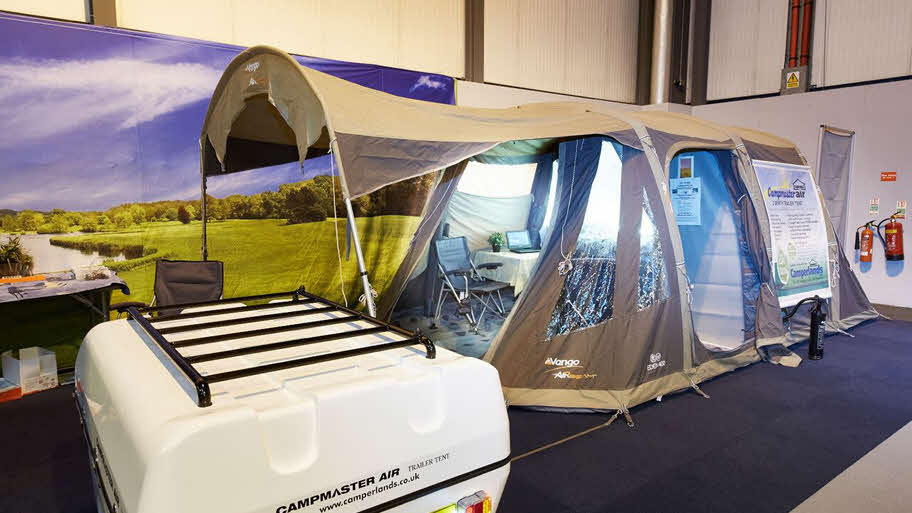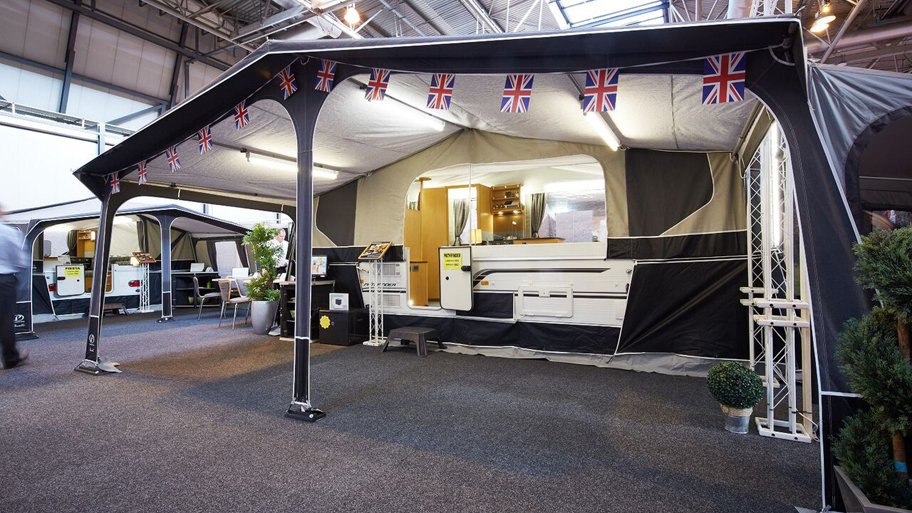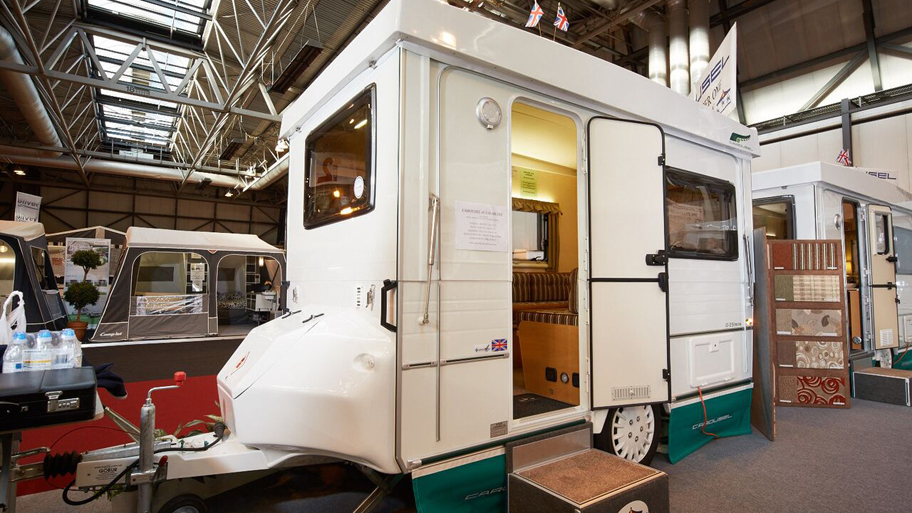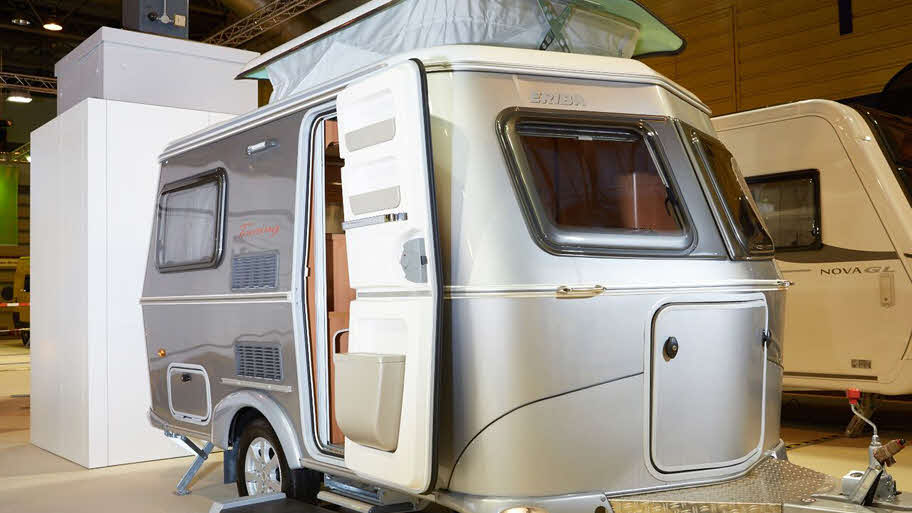
Trailer Tents
A trailer tent has a trailer body with a lid which either folds out like a pram hood to form the floor, or folds out like two flaps of a box top to provide raised sleeping platforms. The sides are flexible, and are generally made of canvas or a man-made equivalent.
Those with the ‘pram hood’ configuration are generally larger on the road, as the trailer body forms the sleeping and/or seating area. This provides good insulation against cold and draughts and is extremely quick to put up. The ‘box lid’ type can fold down to a very small trailer indeed - a distinct advantage if you have a small car, or restricted storage space at home.
Accommodation can be extended by the addition of an awning, which will require pegging and significantly increases the time required to put the trailer tent up.
The law requires brakes on a trailer if it has a maximum permitted weight in excess of 750kg, or if the maximum permitted trailer weight of the trailer exceeds half the towing vehicle's kerbside weight. Most trailer tents weigh comfortably less than these limits, so there is no requirement for brakes, which makes maintenance easier and cheaper.
Some trailer tents have a fully equipped kitchen unit, often attached to the rear of the trailer so it is accessible when the tent part is folded away - useful for picnic stops on the journey. This unit separates when on site and stands alone in the 'awning' part.
Lack of insulation means many trailer tents are not suitable for year-round use and if packed away when wet, then left for a few days, both the tent fabric and interior soft furnishing may be ruined.
Thorough drying out as soon as possible is essential.
| Advantages | Disadvantages |
|---|
|
Lightweight - no need for brakes
Can store on side to occupy minimum space
Easily extendible to suit large family
Large living and sleeping areas possible
Kitchen unit (if fitted) accessible when folded down
Through vision usually possible
|
Not well insulated
May have to fold down wet
May not have kitchen unit
No integral 12V facility
Low security on site
Some require pegging out, which takes time
Separate toilet tent may be required (or use site facilities)
|

Folding Campers
Folding campers are generally more luxurious than a trailer tent, and can cost almost as much as a touring caravan. The trailer body is better insulated, and the fold-out walls can be canvas or water-proof plastic. Some form of heating is usually fitted and the kitchen unit is a permanent feature of the trailer body, often with refrigerator.
Some models even include an on board washroom, incorporating electric flush cassette toilet and hand basin. The sleeping areas normally fold out either side of the trailer, which can then give a row of seats on each side, and room for a central table. Extra storage or sleeping accommodation can often be provided by a tent that fits under the bed extensions.
Folding campers are generally heavier than a trailer tent with a similar footprint to a caravan on the road. The trailer is usually braked with 12-volt lighting and incorporates gas and water services and mains electrics.
Typically, a folding camper will be lighter than a touring caravan and is less easily upset on the road by crosswinds. It can also be stored in a modest garage.
| Advantages | Disadvantages |
|---|
|
Trailer body generally better insulated
Often braked, easy to tow
Integral kitchen unit
Some extend considerably from a small trailer when on site
Heater may be optional
|
Some physical effort required to erect on site, depending on model
May have rigid locking door but canvas sides still insecure on site
Canvas sides/roof means rain can be a problem when folding down
Toilet compartment not generally available, except on some ‘top of the range’ models
|

Folding Caravans
Folding caravans resemble folding campers on the road, but on site, they appear more like a conventional caravan, with a rigid roof and sides. The roof 'lid' sits over the folded walls rather like a chocolate box. The walls are raised with the assistance of gas struts and then fastened inside by clips in each corner and the cupboards, wardrobe, pelmets and kitchen unit are raised into position.
From the inside, a folding caravan it is difficult to distinguish from a conventional caravan and the full suite of facilities are often included, like refrigerator, hob, grill, heater, 12V lighting, mains electrics. Smaller folders tend not to have a separate toilet compartment, but there is usually a cupboard which can house a portable toilet if required.
| Disadvantages | Advantages |
|---|
|
Good insulation in roof and walls
Integral kitchen unit and 12V system
Heater optional
Quite secure on site
Fits into garage
Toilet/shower compartment available in larger models
Much like conventional caravan when on site |
Takes about 15 minutes to set up on site
Some physical effort is required
No access to kitchen whilst travelling
|

Pop-tops
Pop-tops are closest to a conventional caravan, these have a roof section which raises when on site giving full standing room inside most of the caravan. Their lower profile makes them less likely to be upset by passing vehicles on the road and they are easier to store in a small garage. Otherwise, they offer the same facilities as a conventional caravan – albeit on a fairly compact footprint.
| Advantages | Disadvantages |
|---|
|
Fits into most garages
Facilities can be used with roof down if necessary
Very little effort or time is required to raise roof
Toilet/shower compartment often available
Very similar to conventional caravan
Quite secure on site
Heater standard or optional
|
More affected by overtaking vehicles than folder
Fuel consumption also more, although not as much as with conventional caravan
Entry door height lower
Pop-up roof may not extend full length of caravan
|